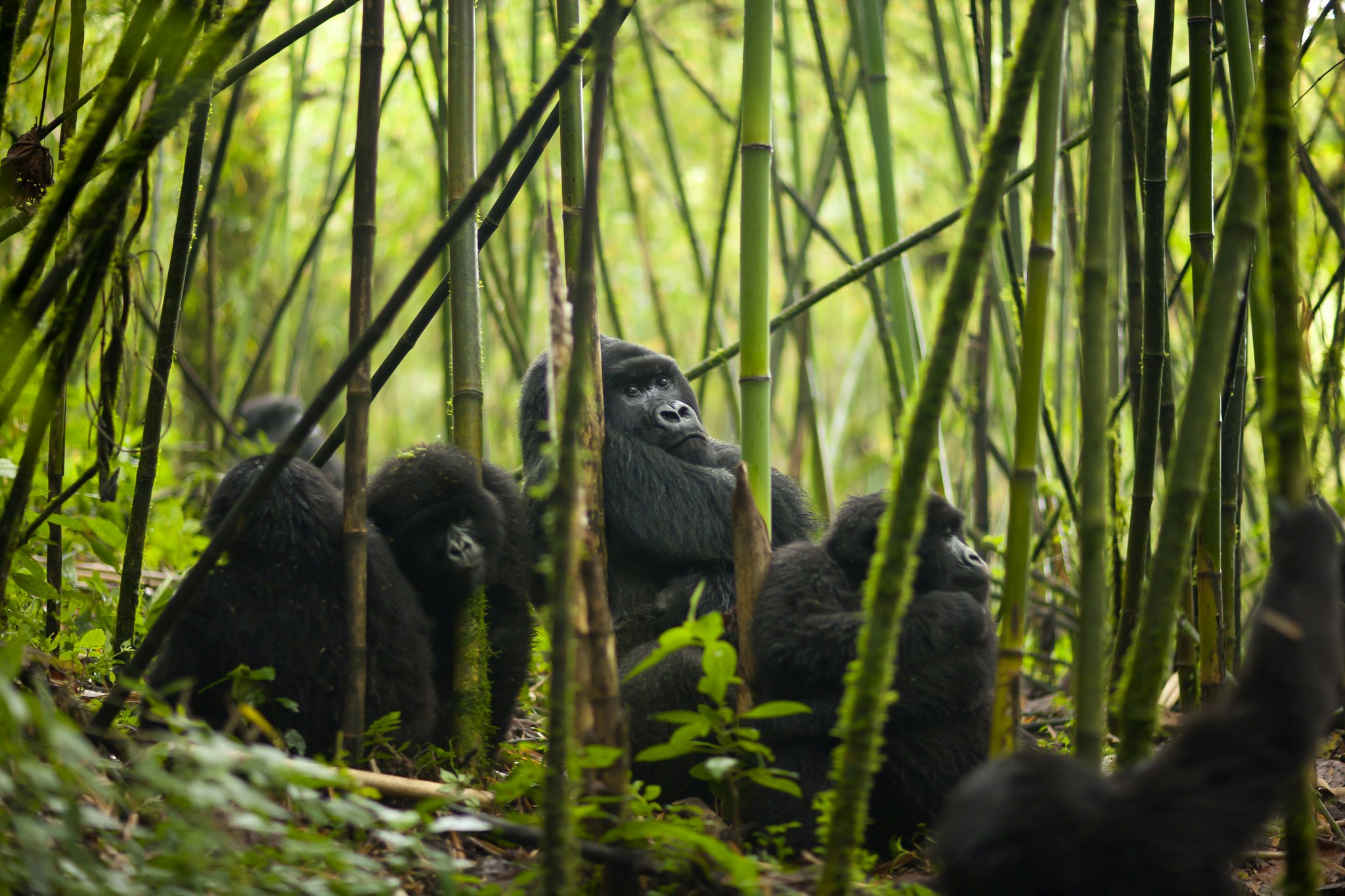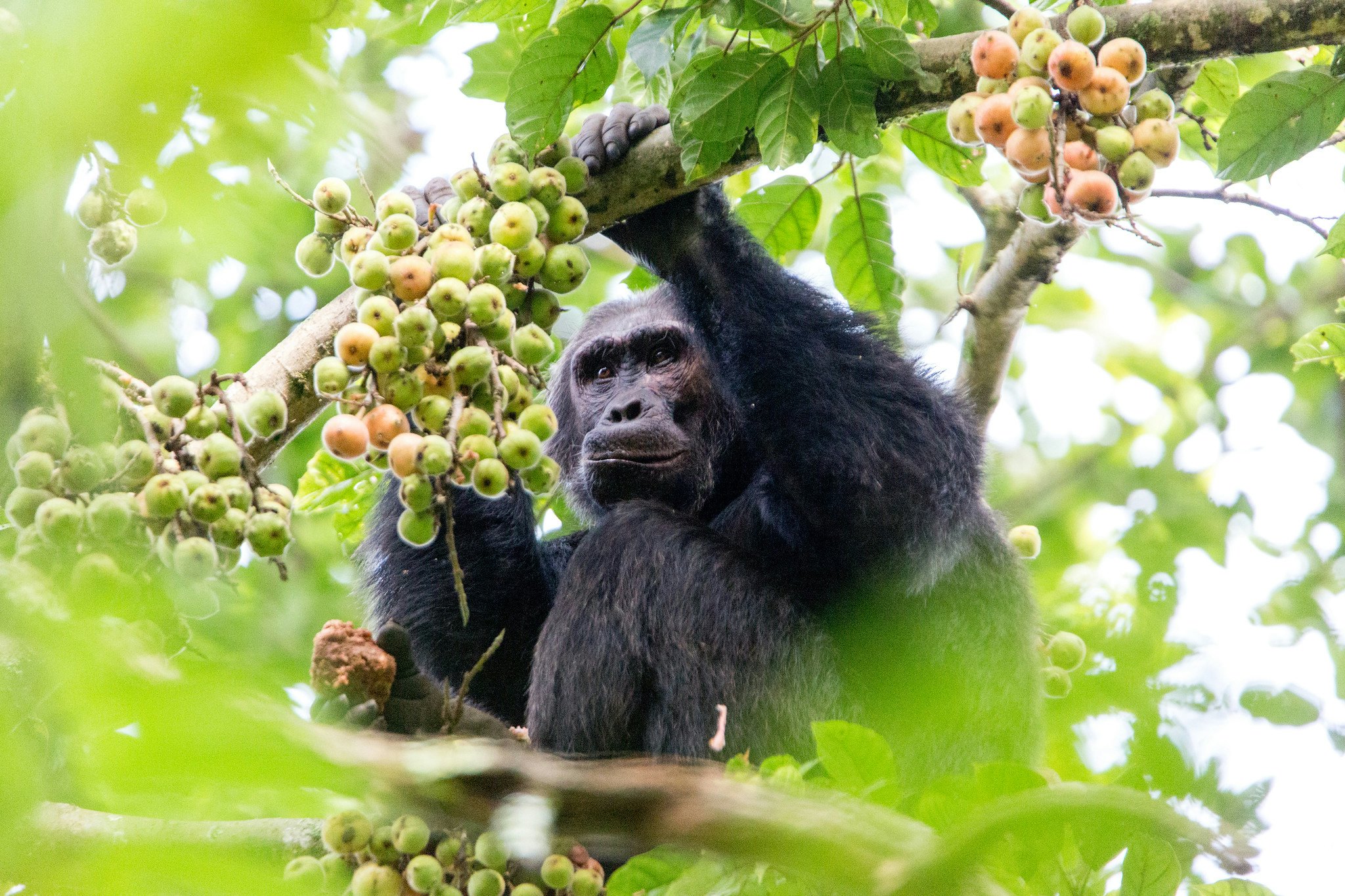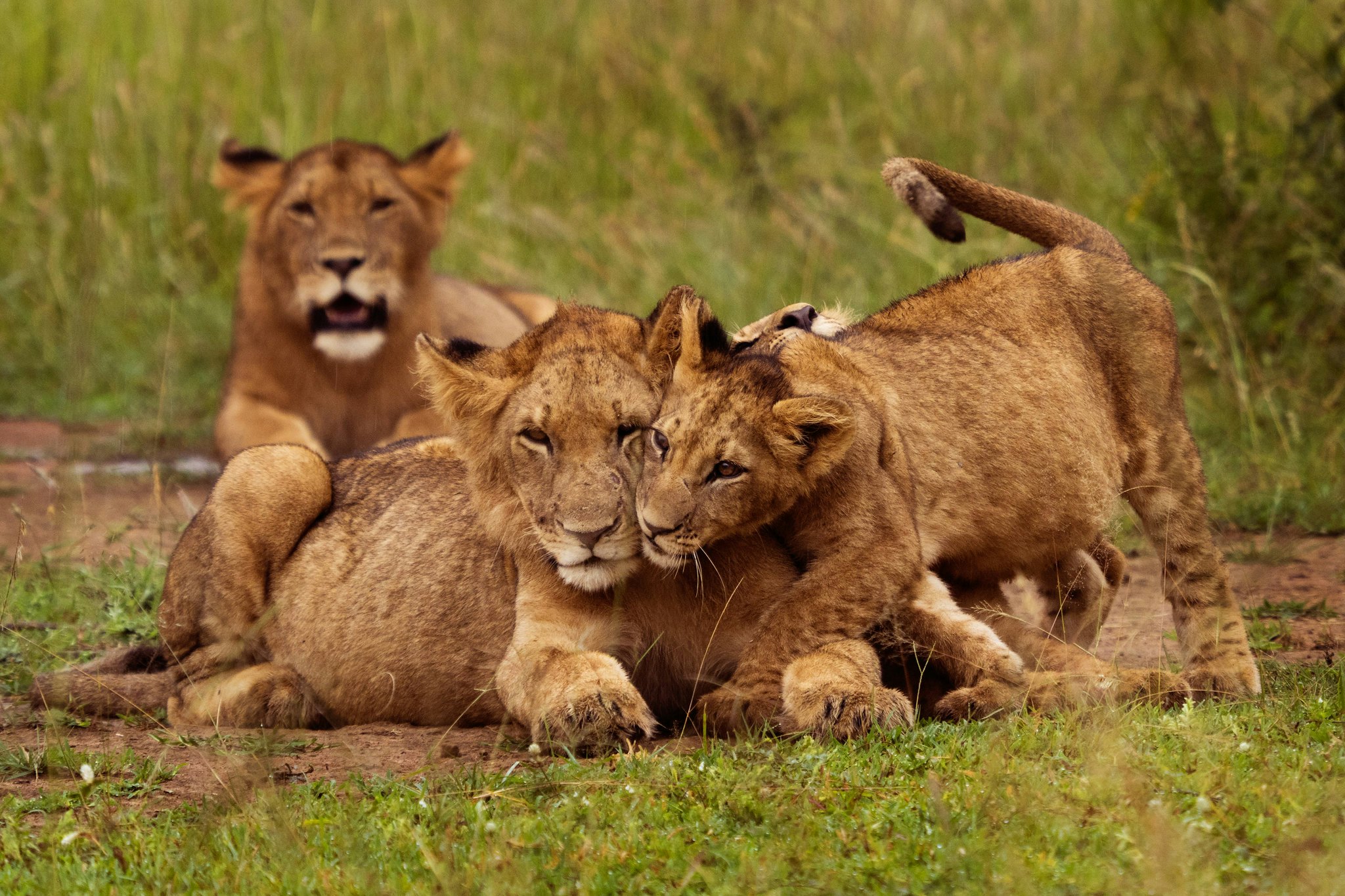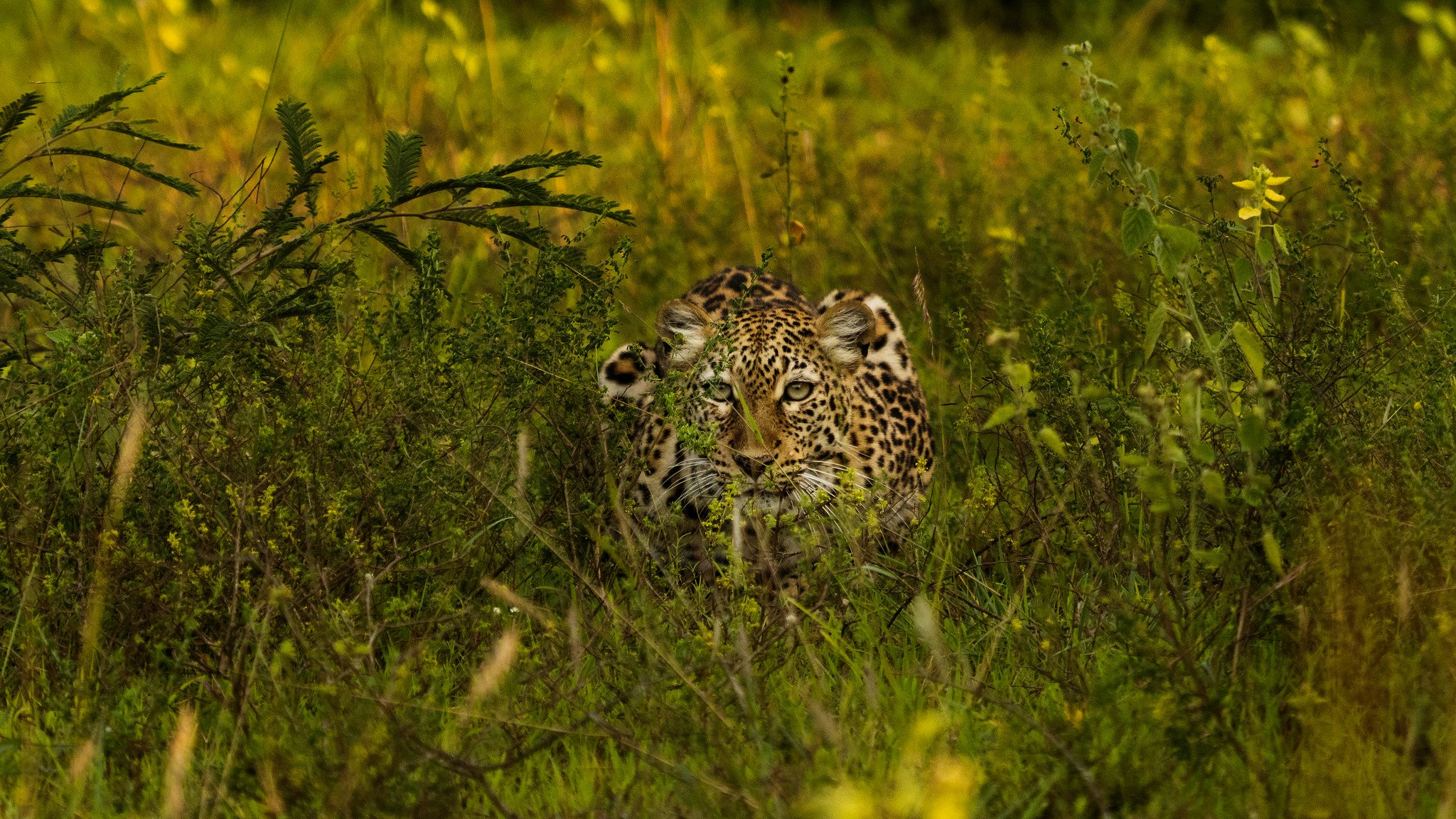
Gorillas and more on Rwanda's wildlife trail
Sponsored by

Nov 30, 2023 • 6 min read

© Image courtesy of visit Rwanda; Illustration by Dustin Johnson / Lonely Planet
Hiking the forested slopes of the majestic volcanoes for a close encounter with mountain gorillas and golden monkeys? Hacking through steamy rainforests in search of colobus monkeys and chimpanzees? Going on safari in a crowd-free, quickly replenishing national park, where you can spot the Big Five? Rwanda offers exceptional wildlife-viewing opportunities in super-scenic environments.

Gorillas and golden monkeys in the Volcanoes National Park
A formidable natural border between Rwanda, Uganda and the DRC, the Virunga volcanoes are where Rwanda really earns its nickname as the ‘Land of a Thousand Hills.’
The majestic Rwandan Virungas are protected by Volcanoes National Park, the main attraction of the country. Here, hidden among the bamboo forests carpeting the volcanoes, are some of the world’s last remaining mountain gorillas.
An up-close encounter with these fascinating creatures while gorilla tracking (US$1500 per person, which includes park entry, compulsory guides and guards) is the highlight of a trip to Africa for many visitors. A close-quarters encounter with a silverback male gorilla can be a hair-raising experience, especially if you’ve only ever seen large wild animals from the safety of a car. Yet despite their intimidating size, gorillas are remarkably nonaggressive animals, entirely vegetarian and quite safe to be around.

You'll be given a safety briefing by park rangers before leaving to track the habituated gorilla groups – of which there are 10 in Volcanoes National Park. The largest group has more than 30 members. Some groups are easier to find, while others are harder to reach and require a strenuous three- to four-hour slog. You will most likely scramble through dense vegetation up steep, muddy hillsides, sometimes to altitudes of more than 10,000 feet (3000m). No matter which group you end up tracking, you’re certain to have a memorable experience.
Visits to the gorillas are restricted to one hour. Visitors are asked to remain more than 15 feet (5m) from the gorillas at all times, but it’s not uncommon to see some gorillas trying to interact with visitors – a peerless wildlife experience!
Gorilla permit bookings can be made through the Rwanda Development Board tourist office in Kigali or a Rwandan tour company. Those visiting on a tour package will have everything arranged for them, while independent travelers can secure permits if they make reservations early on.

While most visitors are understandably driven by the desire to have a face-to-face encounter with real gorillas in the mist, rare golden monkeys, a troop of which have been habituated to human contact, can also be visited. More like chimp-viewing than a gorilla encounter, these beautiful and active monkeys bound about the branches of bigger trees.
Golden monkeys, which are a subspecies of the wider-spread blue monkey, are distinguished by their gold body coloration, which contrasts sharply with black patches on their extremities. Classified as an endangered species, golden monkeys can only be seen in the Virungas.
Permits (US$100) to track the golden monkeys are easy to get hold of.

Colobus monkeys, chimpanzees and birds in Nyungwe Forest National Park
In the southwest of Rwanda, Nyungwe Forest National Park is the country’s most important area of biodiversity, with no fewer than 1000 plant species, 13 species of primates, 75 species of other mammals, at least 275 species of birds and an astounding 120 species of butterflies. It was recently designated as a Unesco World Heritage Site.
Despite its huge biodiversity, Nyungwe is little-known outside East Africa. Its strongest drawcard is the chance to track chimpanzees, which have been habituated over the years to human visits. Much like gorilla tracking, you need to be prepared for lengthy hikes that can take up to a couple of hours. However, the vegetation on the forest floor is much less dense than in the Virunga mountains where the gorillas live, so the walk is generally a little less tiring.

In the rainy season you have a good chance to successfully track the chimps on the colored trails (a network of trails of varying levels of difficulty), though in the dry season they have a tendency to head for higher elevations.
While chimps tend to garner most of the spotlight here, sightings of troops of other monkeys, including Angolan colobi, are virtually guaranteed. The Angolan colobus is an arboreal monkey that is distinguished by its black fur and long, silky white locks of hair. Colobi are distributed throughout the rainforests of equatorial Africa, though they reach epic numbers in Nyungwe Forest National Park.

While they may not be as a charismatic as chimps, colobi are extremely social primates that form enormous group sizes – one of the two semi-habituated troops in Nyungwe numbers no fewer than 500 individuals. Finding oneself in the presence of literally hundreds of primates bounding through the treetops can be a mesmerizing experience. Curious animals by nature, colobi in Nyungwe seem to almost revel in their playful interactions with human visitors.
Troops of Angolan colobus maintain fairly regimented territories, which is good news for those planning a colobus track, as the semi-habituated group in Nyungwe tends to stick to the colored trails. Generally, the trackers can find the colobus monkey troop in an hour or so.

What about birds? Nyungwe is by far the country’s top spot for birdwatching, with some 300-plus species, including no fewer than 27 endemics. The paved road through the park permits viewing at all levels of the forest: expect mountain buzzards and cinnamon-chested bee-eaters perched along here, plus numerous sunbirds, wagtails and flocks of waxbills. Other commonly sighted birds include francolins, turacos, African crowned eagles, hornbills and even Congo bay owls.
Serious birdwatchers can book an excursion with one of the specialist birding guides based in Nyungwe.

The big five, in Akagera National Park
The gem of Eastern Rwanda, Akagera National Park is getting increasingly popular among safari enthusiasts. Although it can't compete (yet) with its counterparts in Kenya or Tanzania, its scenic landscapes, diverse habitats and rich wildlife are well worth the trip. Thanks to strict conservation laws, good management, the reintroduction of lions and black rhinos, the revamping of old camps and the building of new ones, it’s now a must-see on any Rwandan itinerary.
There are three distinct environments in the park: standard savannah as seen in much of the region; an immense swampy area along the border with Tanzania that contains six lakes (great for boat trips) and numerous islands, some of which are covered with forest; and a chain of low mountains on the flanks of the park with variable vegetation, ranging from short grasses on the summits to wooded savannah and dense thickets of forest.

Wildlife is varied. Carnivores in Akagera are limited to rarely seen leopards (about 150 individuals) and hyenas as well as genets, servals and jackals. And lions? In 2015 seven individuals were flown from South Africa to Rwanda in a chartered plane and transported to Akagera. There are now more than 50 lions in the park. Eighteen black rhinos were also introduced to Akagera in 2017 and 30 white rhinos in 2021.
Of the other large 'trophy' animals there are an estimated 90 elephants in the park, which are quite commonly seen. Buffalo are also present in reasonably healthy numbers (about 3000), and there are masses of hippos and crocs in the lakes. Antelope and other plains game are well represented, though herds tend to be small and the animals rather skittish.

Common safari staples include impala, topi, zebra and waterbuck, as well as the majestic but rare roan antelope and the diminutive Oribi. Maasai giraffes, never native to the park, have been introduced and are faring well. Birdwatching is also excellent around the banks of Lake Ihema.
The good thing about Akagera is that you won’t come across too many other wildlife-viewing drivers either, which means you can soak up the park’s splendid nature in relative peace and isolation. Invaluable!

Sponsored by Visit Rwanda
As a travel entertainment and inspirational media outlet, we sometimes incorporate brand sponsors into our efforts. This activity is clearly labeled across our platforms.
This story was crafted collaboratively between Visit Rwanda and Lonely Planet. Both parties provided research and curated content to produce this story. We disclose when information isn’t ours.
With sponsored content, both Lonely Planet and our brand partners have specific responsibilities:
-
Brand partner
Determines the concept, provides briefing, research material, and may provide feedback.
-
Lonely Planet
We provide expertise, firsthand insights, and verify with third-party sources when needed.















